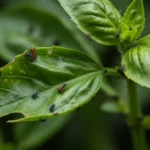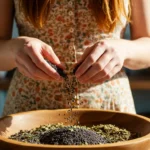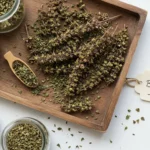Eight years ago, I, Kalsoom Imran, nearly wept over a basil plant. It had thrived, a fragrant emerald bush, then, seemingly overnight, withered into a sad, skeletal thing. That’s when I began my deep dive, desperately asking myself, “how do I keep my basil growing?”
Okay, let’s talk basil. I mean, who doesn’t love that fresh, aromatic burst it brings to a meal? But sometimes, keeping those little green leaves thriving can feel like a bit of a mystery. I’ve been there, trust me. I’ve had basil plants that looked like they were auditioning for a zombie movie, all pale and droopy. But over time, I’ve learned a thing or two about how to encourage basil growth and keep them happy. So, let’s dive in, shall we?
Understanding Basil Growth Needs
Sunlight: The Key to Basil Thriving
First things first, sunlight. These little guys are sun worshippers. They crave it, they need it, and without enough, they’ll definitely let you know. Think of it like this: basil is a tiny solar panel, converting sunlight into the energy it needs to grow those lovely leaves.
Ideally, you want to give your basil plant at least six to eight hours of direct sunlight every day. If you’re growing indoors, a sunny windowsill or a grow light is absolutely essential. If you’re noticing your basil is looking pale or stretching out, it’s probably not getting enough light. So, move it to a sunnier spot and watch it perk right up. This is crucial for how to maintain basil plant growth.
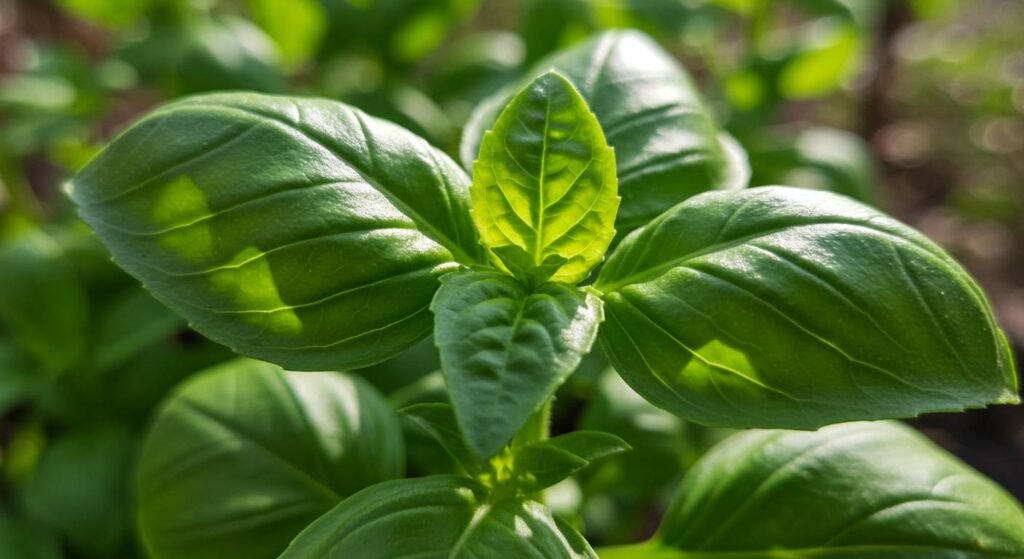
Watering: How Much is Enough to Sustain Basil Growth?
Watering is another critical piece of the puzzle. Basil doesn’t like to be soggy, but it also doesn’t appreciate drying out completely. It’s a delicate balance. I’ve found that the best approach is to water deeply when the top inch of soil feels dry. Stick your finger in there, get a little dirty, and see how it feels.
If it’s dry, give it a good drink until the water starts to drain out the bottom of the pot. Then, let it dry out a bit before watering again. Overwatering can lead to root rot, which is a basil plant’s worst nightmare. Underwatering, on the other hand, will cause wilting and stress. So, finding that sweet spot is key to sustaining basil growth. You might be wondering, how often should basil be watered? It’s a common question!
Soil and Nutrients: The Foundation for Healthy Basil
The soil your basil is growing in is like its home. It needs to be comfortable and nutrient-rich. Well-draining soil is crucial to prevent waterlogging. I like to use a good quality potting mix that’s specifically designed for containers. You can also add some compost to give it an extra boost of nutrients.
Basil isn’t a super heavy feeder, but it does appreciate a little extra love. A balanced fertilizer can help boost basil plant growth and keep it producing those flavorful leaves. Think of it like giving your basil a multivitamin to keep it strong and healthy.
Temperature and Environment: Encouraging Basil Growth
Basil is a bit of a diva when it comes to temperature. It loves warmth and hates the cold. It thrives in temperatures between 60 and 80 degrees Fahrenheit. If it gets too cold, the growth will slow down, and the leaves might start to turn yellow. Frost is definitely a no-no. So, if you’re growing outdoors, make sure to bring it inside when the temperatures start to drop. You might need to know what temperature can basil tolerate.
Basil also appreciates good air circulation. This helps prevent fungal diseases. So, make sure your plant isn’t crowded and has plenty of room to breathe. This is essential for keeping basil healthy.
Practical Tips for Growing Basil Successfully
Pinching and Pruning: How to Make My Basil Bushier
Okay, now let’s get into some practical tips that have really made a difference in my basil growing journey. One of the best things you can do is pinch and prune your basil regularly. When your plant is young, pinch off the top set of leaves when it has about four to six sets of leaves.
This will encourage it to branch out and become bushier, rather than just growing tall and leggy. Think of it as giving your plant a haircut. It might seem counterintuitive, but it actually stimulates growth and how to make my basil bushier.
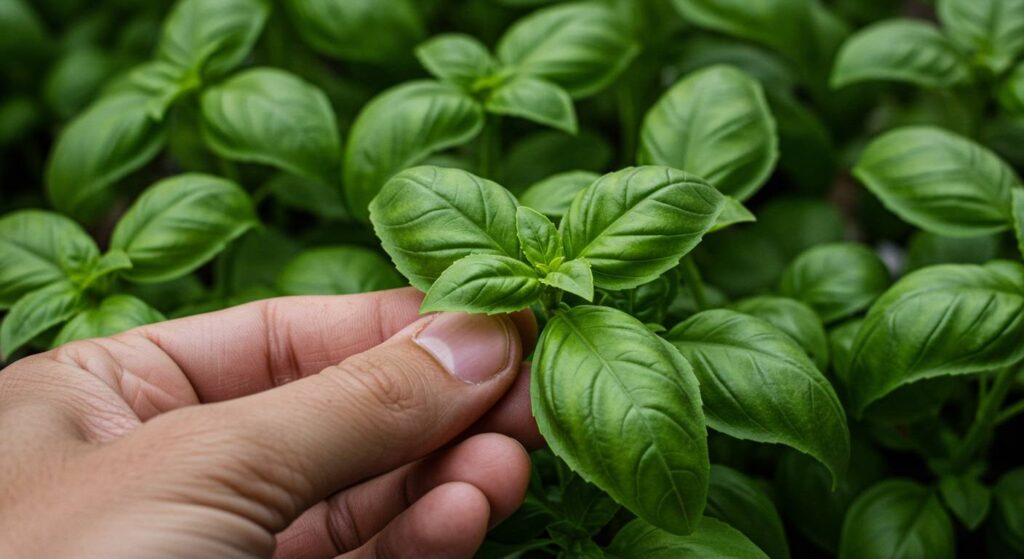
Harvesting Techniques to Promote Basil Plant Development
Harvesting is another form of pruning, and it’s essential for promoting basil plant development. Don’t be afraid to harvest your basil leaves! The more you harvest, the more your plant will produce. When you harvest, make sure to cut just above a set of leaves.
This will encourage new growth from those nodes. It’s like telling your plant, “Hey, you’re doing great, keep it up!” I like to harvest regularly, even if I don’t need a ton of basil at the moment, just to keep the plant growing strong. Learn how to harvest basil correctly.
Fertilizing: Boosting Basil Plant Growth
As I mentioned earlier, basil isn’t a super heavy feeder, but it does appreciate a little extra help. A balanced liquid fertilizer applied every few weeks can really help boost basil plant growth. I like to dilute the fertilizer to half strength to avoid burning the roots.
You can also use a slow-release granular fertilizer, but I find that liquid fertilizer is easier to control. Just remember, less is often more when it comes to fertilizing. You don’t want to overdo it and end up with a plant that’s all leaves and no flavor.
Pest and Disease Control: Keeping Basil Healthy
Like any plant, basil can be susceptible to pests and diseases. Aphids, spider mites, and whiteflies are common culprits. The best way to deal with pests is to catch them early. Regularly inspect your plant for any signs of trouble.
If you do find pests, you can try spraying them off with a strong stream of water or using an insecticidal soap. Fungal diseases can also be a problem, especially in humid conditions. Good air circulation and avoiding overwatering can help prevent these issues. It’s all about proactive care for keeping basil healthy. If you are having issues, learn how to get rid of pests on basil.
Advanced Techniques for Maximizing Basil Production
Growing Basil Continuously: Succession Planting
If you’re serious about basil, you might want to consider succession planting. This means planting new basil seeds or seedlings every few weeks to ensure a continuous harvest. It’s especially useful if you have a large family or use a lot of basil.
This way, you’ll always have a fresh supply of those delicious leaves. It’s a great way of growing basil continuously and never running out.
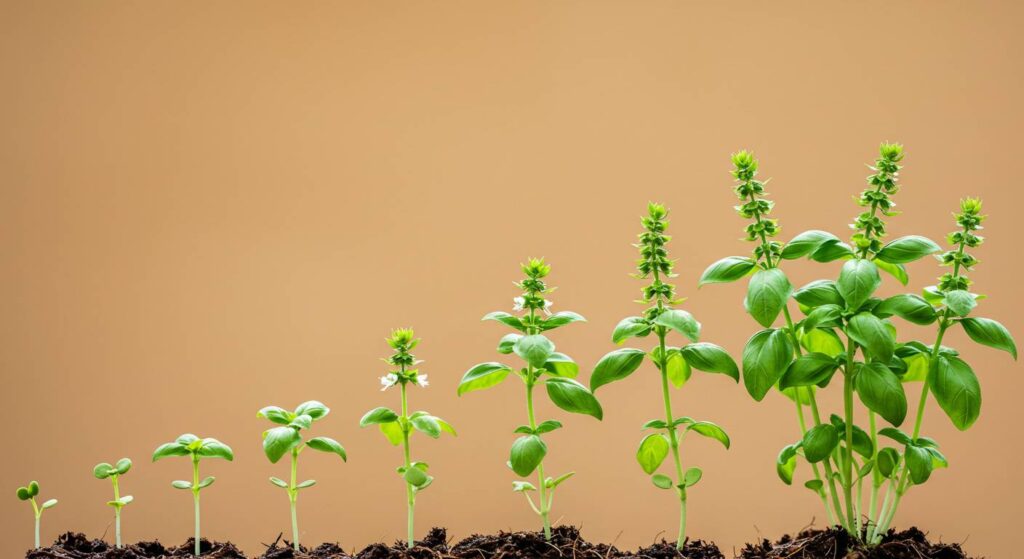
Overwintering Basil: Prolong Basil Life
Basil is an annual plant, meaning it typically completes its life cycle in one growing season. However, you can try to overwinter your basil indoors to prolong basil life. Before the first frost, bring your basil plant inside and place it in a sunny location.
You might need to use a grow light to supplement the natural light. Keep an eye on the watering and fertilizing, and with a little luck, your basil will make it through the winter. This way, you’ll have a head start in the spring. You might want to know can basil survive winter indoors?
Hydroponic Basil Growing: An Alternative Approach to Nurturing Basil Growth
If you’re feeling adventurous, you can try growing basil hydroponically. This involves growing plants without soil, using a nutrient-rich water solution. Hydroponics can be a great way to grow basil indoors, especially if you don’t have a lot of space. It also allows you to control the growing conditions precisely. This is a great approach to nurturing basil growth if you want to try something different.
Choosing the Right Basil Variety for Long Lasting Basil Plant
Not all basil varieties are created equal. Some are more compact, while others are more vigorous. Some are more flavorful, while others are more ornamental. Choosing the right basil variety for your needs can make a big difference in how well it grows and how long it lasts. If you’re looking for a long lasting basil plant, consider varieties like ‘Genovese’ or ‘Sweet Basil’, which are known for their productivity.
Troubleshooting Common Basil Problems
Yellowing Leaves: How to Care for Basil to Keep it Growing
Yellowing leaves can be a sign of a few different problems. It could be due to overwatering, underwatering, nutrient deficiencies, or even cold temperatures. The first step is to try and figure out the cause.
Check the soil moisture, make sure it’s getting enough light, and consider adding a little fertilizer. If you’ve ruled out all those possibilities, it might be a sign of a more serious problem, like a root disease. Addressing the root cause is the key to how to care for basil to keep it growing. If you see this, you might want to know why is my basil plant turning yellow.
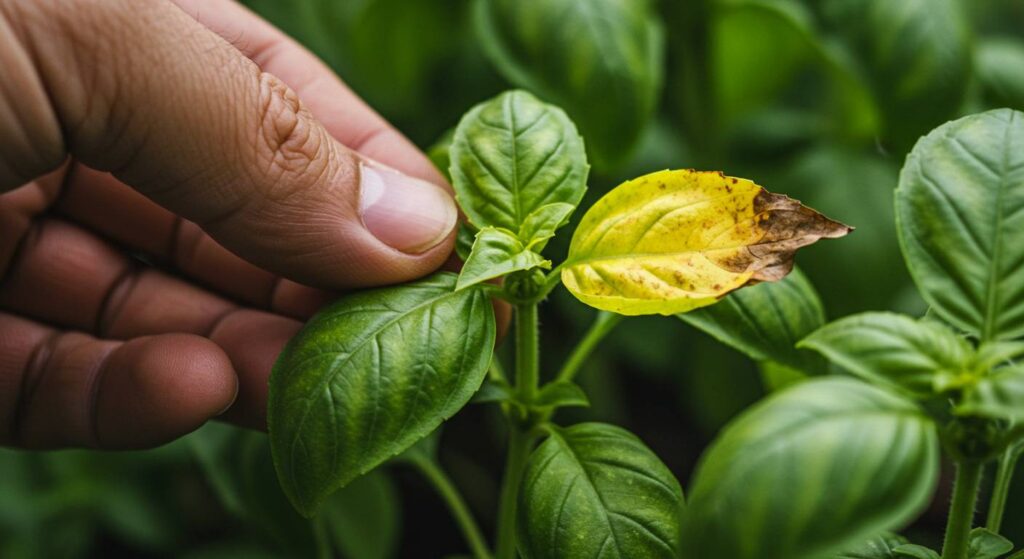
Leggy Growth: Tips for Growing Basil Successfully
Leggy growth, where the plant stretches out and becomes thin and weak, is usually a sign that it’s not getting enough light. Move it to a sunnier location or supplement with a grow light. You can also pinch off the top set of leaves to encourage bushier growth. This is one of the crucial tips for growing basil successfully.
Stunted Growth: How to Get Basil to Flourish
Stunted growth can be caused by a number of factors, including poor soil, lack of nutrients, or pest infestations. Check the soil, make sure it’s well-draining and nutrient-rich. Fertilize if needed, and inspect for pests. Addressing these issues will help how to get basil to flourish.
Wilting: Help My Basil Grow Better
Wilting is usually a sign that your basil plant is either too dry or too wet. Check the soil moisture and adjust your watering accordingly. If the soil is dry, give it a good drink. If the soil is soggy, let it dry out before watering again. Sometimes, wilting can also be a sign of root rot, so make sure to inspect the roots if the problem persists. This is a key step in help my basil grow better. If your plant is wilting, you might be asking why is my basil plant wilting?
Maintaining Basil Plant Growth: Best Practices for Basil Cultivation
Regular Inspection: Ensuring Basil Thrives
Regular inspection is key to keeping your basil plant healthy and happy. Take a few minutes each week to check for pests, diseases, and any signs of stress. Catching problems early can make a big difference in the long run. This practice is essential for ensuring basil thrives.
Adjusting Care Based on Season: Sustaining Basil Growth
Basil’s needs will change depending on the season. In the summer, it will need more water and sunlight. In the winter, it will need less water and may need supplemental light. Adjusting your care based on the season is crucial for sustaining basil growth. Learn more about basil plant care in winter.
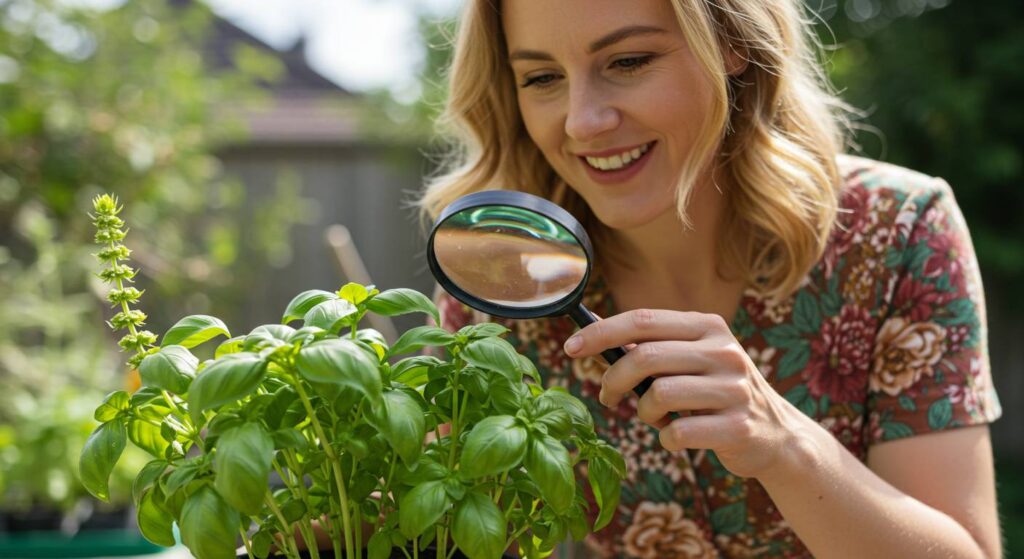
The Importance of Air Circulation: Grow More Basil
Good air circulation is essential for preventing fungal diseases. Make sure your basil plant isn’t crowded and has plenty of room to breathe. You can also use a small fan to improve air circulation, especially if you’re growing indoors. This will help you grow more basil successfully.
How to Care for Basil to Keep it Growing: A Recap
Okay, let’s recap the key points on how to care for basil to keep it growing. Provide plenty of sunlight, water deeply when the top inch of soil is dry, use well-draining soil, fertilize regularly, pinch and prune regularly, harvest often, and inspect for pests and diseases. By following these best practices, you’ll be well on your way to having a thriving basil plant.
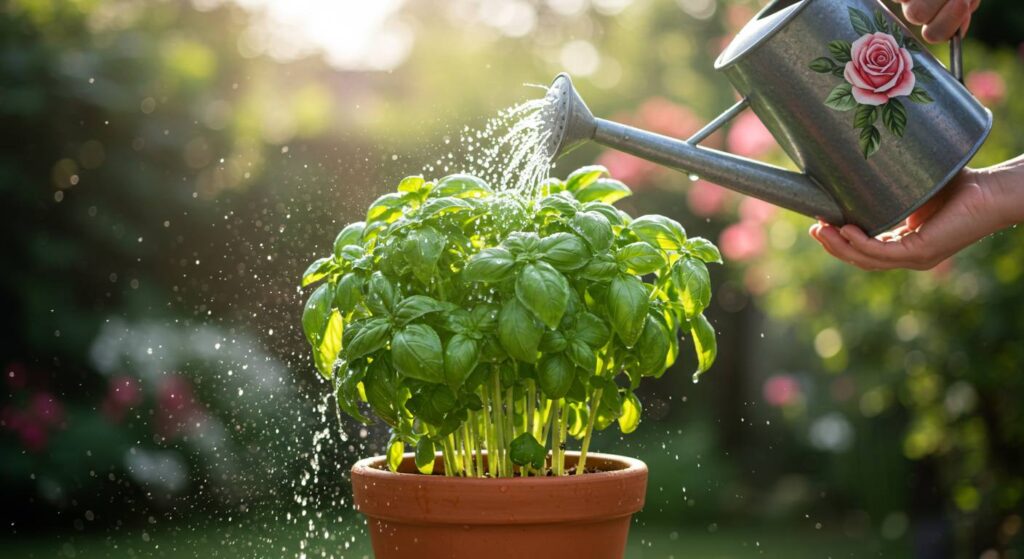
Conclusion: Keeping Basil Alive and Growing
So, there you have it. My comprehensive guide to keeping your basil alive and growing. It might seem like a lot, but once you get the hang of it, it’s actually quite simple. The key is to pay attention to your plant’s needs and adjust your care accordingly. With a little love and attention, you can enjoy a bountiful harvest of fresh, flavorful basil all season long. Remember, it’s all about keeping basil alive and growing and enjoying the process. Happy growing!


